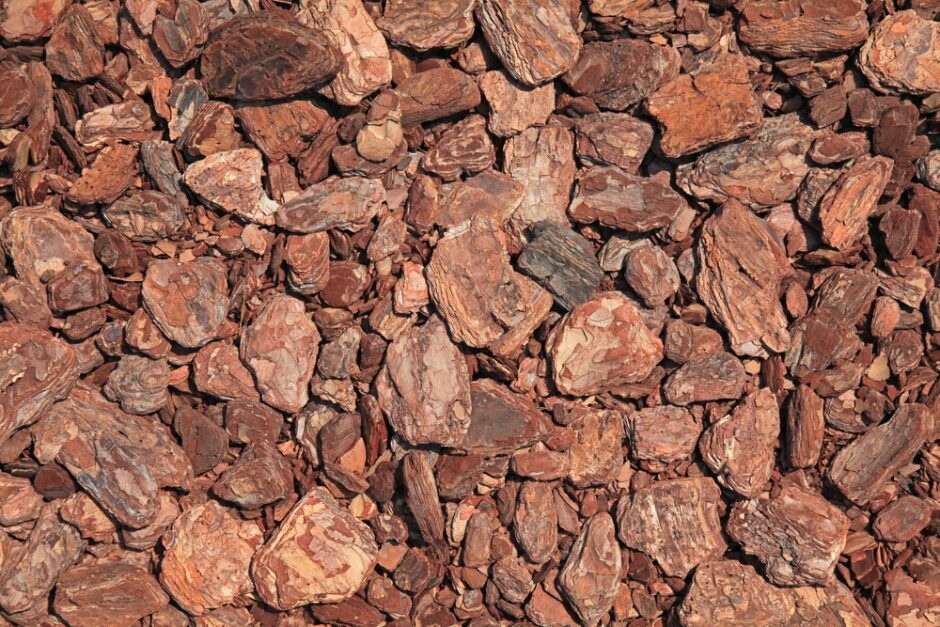Mulching … the Benefits
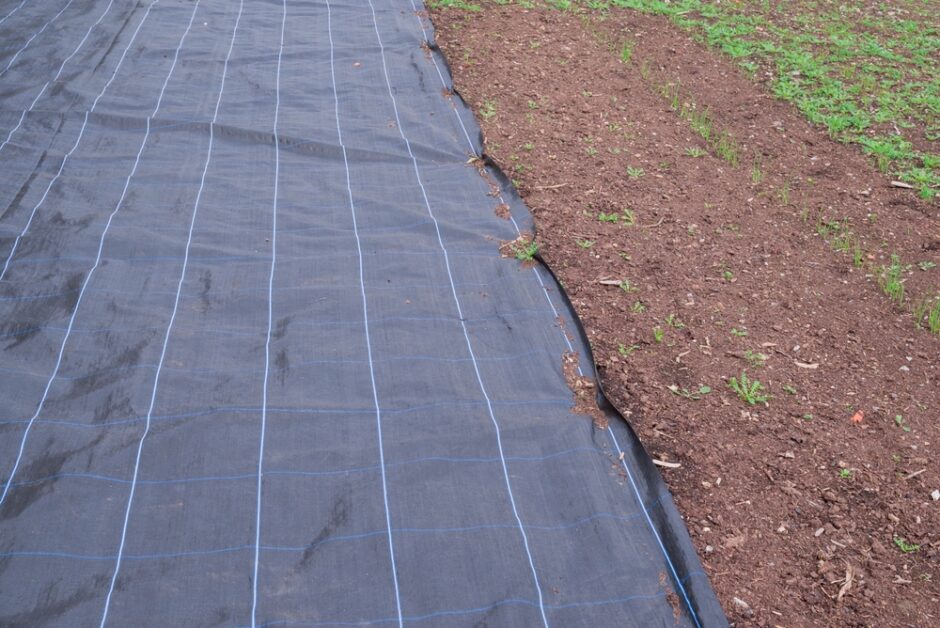
A Semi-permeable Membrane
The act of creating a mulch has five main purposes.
1/. To feed – compost/manure
2/. To improve soil – compost/grit/manure
3/. To retain moisture – compost/membrane
4/. To suppress weeds in the soil – membrane
5/. To provide an ornamental surface – membrane/gravel/woodchip
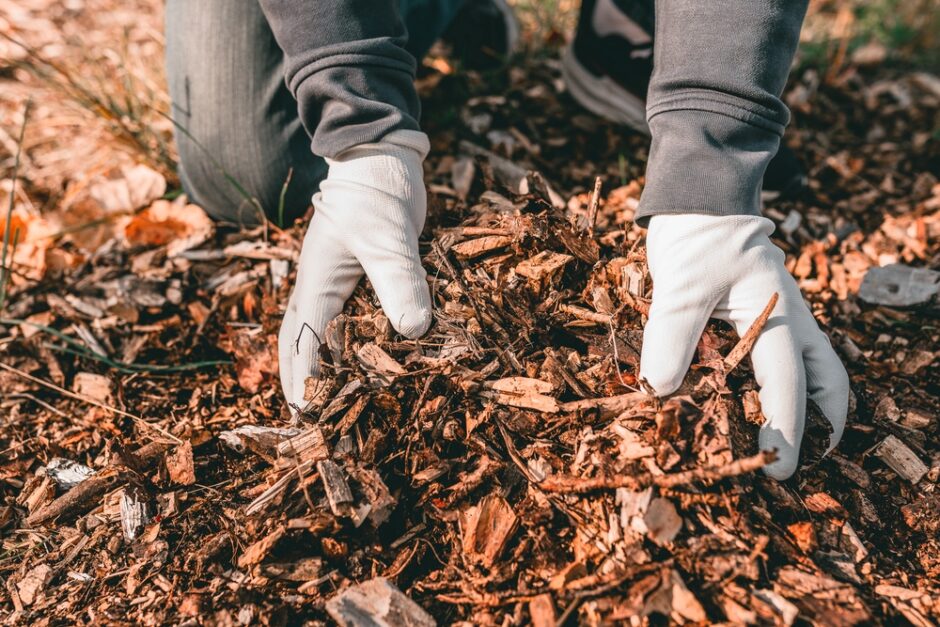
Wood Chip
Mulching is the act of placing a layer of organic or inorganic matter on top of the soil, often with a view to prevent the growth of unwanted weeds from within the soil.
And that is the key – it suppresses weeds from WITHIN THE SOIL.
Together with a semi-permeable membrane placed underneath the decorative medium, this can also prevent even existing perennial weeds from growing through the mulch from the soil. It will also bring moisture up to the surface of the soil and reduce the need for irrigation in newly planted borders.
A belief has developed however, that the mere scattering of woodchip material will prevent weeds from growing. THIS IS NOT TRUE.
I have seen many instances of “weeds” growing out of wood chip mulch, even of a reasonable depth. I have seen bark mulch which has been contaminated with soil by careless handling, and it is that carelessness which has caused the problem.
The thing to remember about soil is that it will have thousands of weed seeds in it, and the moment conditions become favorable for those seeds to germinate, then germinate they will.
In order to reduce their chances of germinating, a thick layer of Mulch – say 15 Cms – needs to be applied to create a physical barrier between the soil surface and the light. Because it is the absence of light that makes the difference.
That does not mean to say, for instance, that if your choice of mulch material is 10mm decorative gravel, which you would not apply at such a great depth as 15 Cms – more likely 3 – 5 Cms, weeds will not germinate in the gravel, because they will. There will be weed seeds within the gravel, and of course, weed seeds blow in from everywhere. The point is that germinating weed seeds will not be able to penetrate the soil beneath if you have at first laid down a membrane.
In addition, if you were to put a semi-permeable membrane underneath the gravel, it will seriously deter any existing perennial weeds from growing through the gravel from the soil beneath. If you don’t include a membrane, then there will be a realistic chance of that outcome.
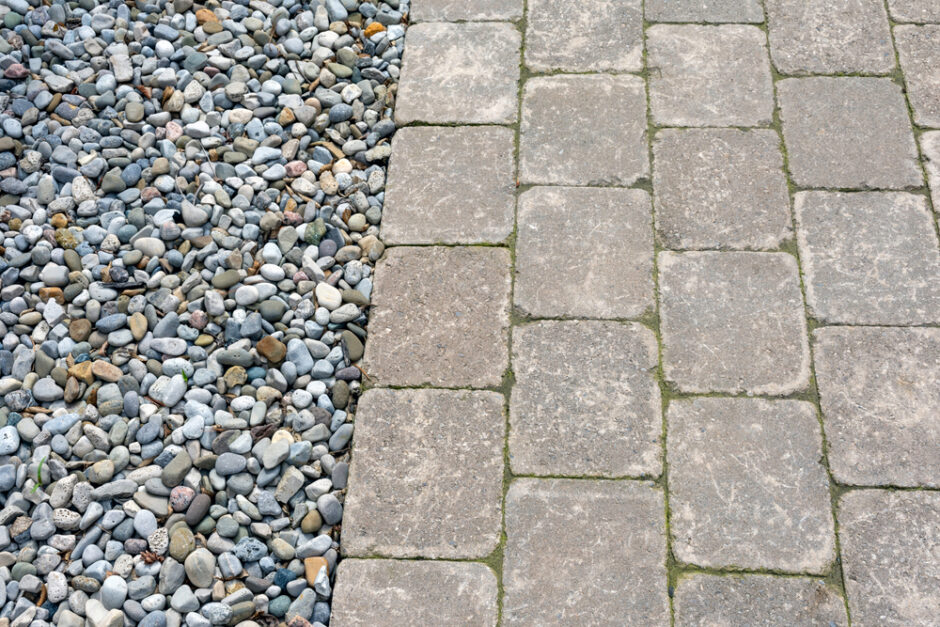
Grey 10mm Gravel
Decorative Gravels as well as bark can enhance hard and soft landscaping features whilst acting as a mulch. However, please be aware that if a bark mulch is contaminated with even very small amounts of soil or sand, as can easily happen, then it is not uncommon to see weeds growing on the surface of a mulch.

Decorative Stone
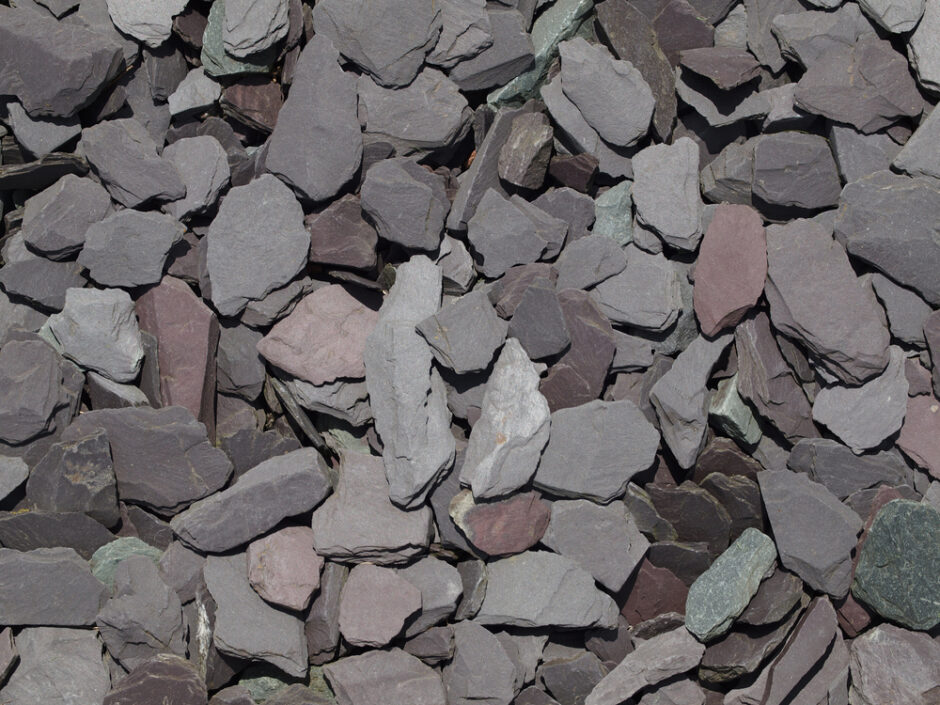
Plum Slate
There is a very good choice these days where decorative stone finishes are concerned, and it is always worth visiting your local Builders Merchants to see what is available.
